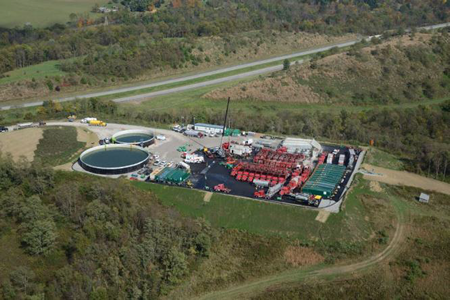 Solmax, an international manufacturer of geosynthetic technologies, has published a paper on risk assessment for the shale gas industry and implications for geosynthetics. A version of this case study was presented in February at the Geosynthetics 2015 conference in Portland, Oregon.
Solmax, an international manufacturer of geosynthetic technologies, has published a paper on risk assessment for the shale gas industry and implications for geosynthetics. A version of this case study was presented in February at the Geosynthetics 2015 conference in Portland, Oregon.
DOWNLOAD A COPY (via Solmax)
Authored by Mathieu Cornellier, P.E., and Daniel Tan, P.E., the paper addresses frac tank function, design, and failure risk. The role of geomembranes in meeting environmental and operational containment needs (secondary and primary) are included.
They draw upon experience in the Marcellus Shale formation, identify best practices, and incorporate data from other shale formations and hydraulic fracturing operations (e.g., Barnett Shale development). Operational concerns and solutions from 10 job sites are includes, with surface runoff being self-identified by operators as a major concern.
Geosynthetic and pad design solutions to mitigate those concerns are proposed. An interest option that was investigated is the use of a double-layer of 30-mil LLDPE geomembranes instead of a single 60-mil HDPE geomembrane. The double-layer was found to be just as effective but offer more flexibility for pad design and site utilization.
“Stiffer regulations regarding the containment of these fluids are proposed to reduce the environmental impact of shale gas extraction,” write the authors.
“The failure of a tank, pit liner, or the line carrying fluid can result in the release of contaminated materials directly into surface water and shallow ground water. Environmental clean-up of these accidentally released materials can be a costly and time consuming process. Perception of the industry can also be damaged if such event is to take place. Therefore, prevention of spills is vitally important. The highest water table contamination risk stemming from the drilling and fracking for Shale gas does not come from the well itself but rather from improper surface containment of the water, chemicals and flowback water.”











